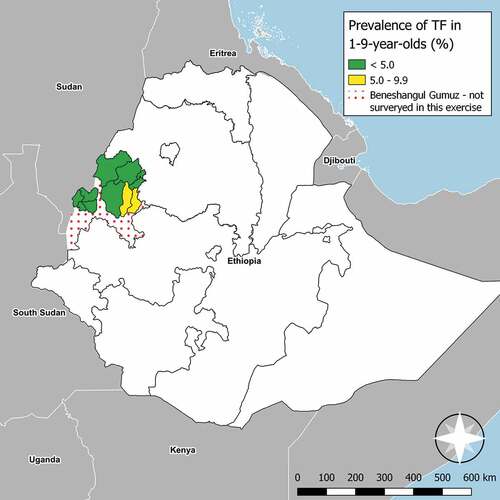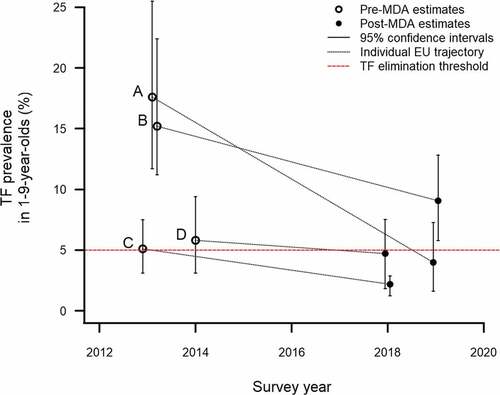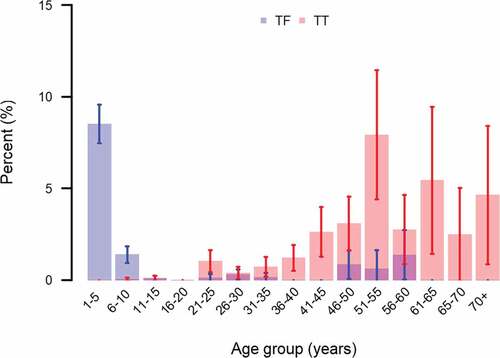Figures & data
Figure 1. Prevalence of trachomatous inflammation–follicular (TF) measured at trachoma impact surveys in Benishangul Gumuz, Ethiopia, March 2018− March 2019. The prevalence of trachomatous trichiasis unknown to the health system measured simultaneously in all four EUs shown here was between 0.4 and 0.9%. The boundaries and names shown and the designations used on this map do not imply the expression of any opinion whatsoever on the part of the authors, or the institutions with which they are affiliated, concerning the legal status of any country, territory, city or area or of its authorities, or concerning the delimitation of its frontiers or boundaries.

Table 1. Population aged ≥1 year participating in trachoma impact surveys in Benishangul Gumuz, Ethiopia, March 2018− March 2019.
Table 2. Children aged 1 − 9 years with trachomatous inflammation–follicular (TF) and trachomatous inflammation–intense (TI) in Benishangul Gumuz, Ethiopia, March 2018− March 2019.
Table 3. People aged ≥15 years with trachomatous trichiasis (TT) identified in trachoma impact surveys in Benishangul Gumuz, Ethiopia, March 2018− March 2019.
Figure 2. Change in trachomatous inflammation–follicular (TF) prevalence in 1–9-year-olds between baseline estimates (published elsewhere)Citation14 and trachoma impact survey estimates March 2018− March 2019, Benishangul Gumuz, Ethiopia. (A) Pawe and Mandura; (B) Dibate and Bullen; (C) Sherkole, Menge, Kurmuke & Homosha; (D) Wombera, Guba & Dangure. X-coordinates have been artificially offset to allow the confidence interval whiskers to be clearly seen.

Table 4. Water, sanitation and hygiene access of households in Benishangul Gumuz, Ethiopia, March 2018− March 2019.
Table 5. Univariable and multivariable analysis of factors associated with trachomatous inflammation–follicular (TF) in children aged 1–9 years in trachoma impact surveys in Benishangul Gumuz, Ethiopia, March 2018─March 2019. Models all include cluster of residence as a random-effects variable to account for clustering in the survey data.
Figure 3. Age distribution of trachomatous inflammation–follicular (TF) and trachomatous trichiasis (TT; management status not specified) during trachoma impact surveys in four evaluation units (11 woredas) of Benishangul Gumuz, Ethiopia, March 2018─March 2019. Whiskers represent 95% confidence intervals around age-specific proportions.

